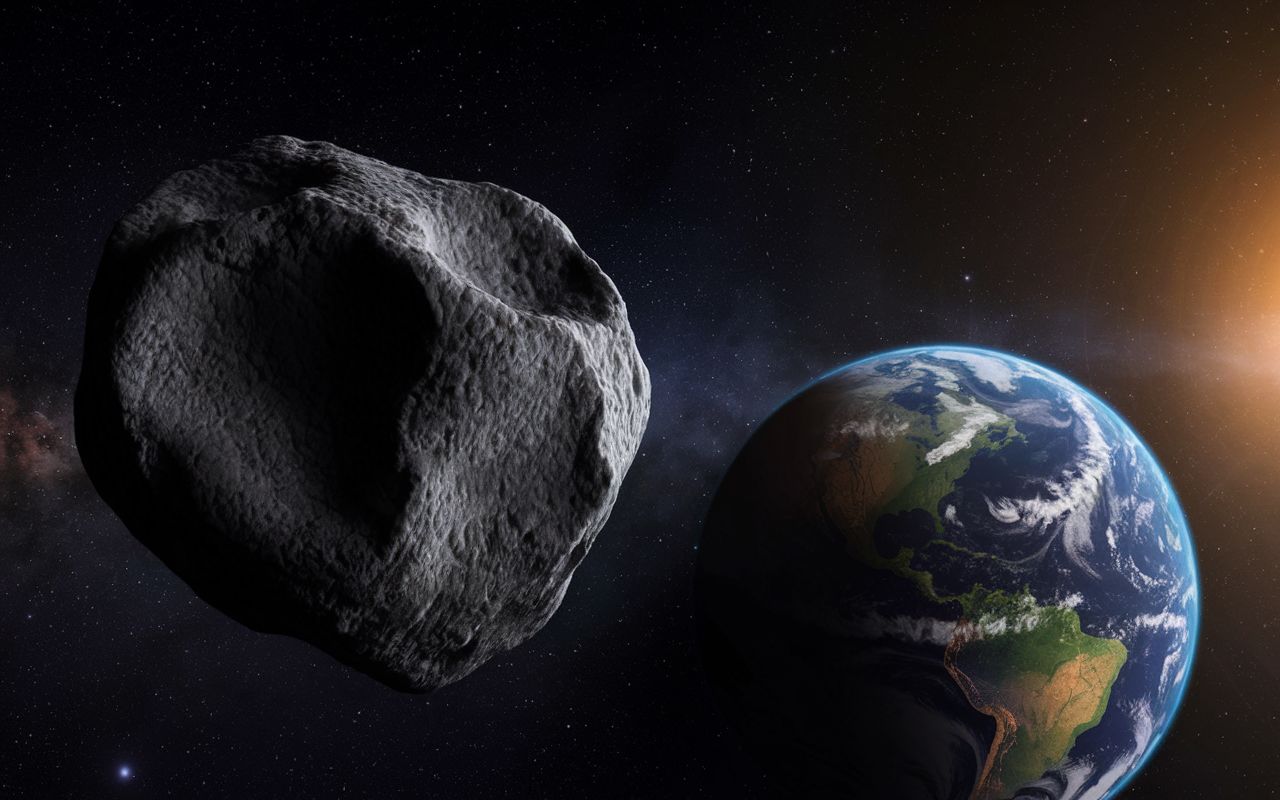🌊 Groundbreaking discovery: a 100-meter tsunami in the North Sea
Follow us on Google News (click on ☆)
Thanks to new seismic imaging techniques and meticulous analysis of rock samples, an international team led by Dr. Uisdean Nicholson from Heriot-Watt University has definitively established the extraterrestrial origin of this geological structure. The researchers discovered quartz and feldspar crystals showing characteristic deformations that can only form under extreme pressures, similar to those generated by an asteroid impact. These "shocked" minerals constitute irrefutable proof that the crater indeed resulted from a cosmic collision that occurred approximately 45 million years ago.

The reconstruction of events reveals a catastrophic scenario: an asteroid about 160 meters (525 feet) in diameter struck the North Sea at a shallow angle, almost instantly causing the formation of a curtain of water and rocks rising 1.5 kilometers (nearly 1 mile) high. The collapse of this monumental column generated a tsunami exceeding 100 meters (330 feet) in height, submerging the surrounding coasts. This discovery helps to better understand the consequences of oceanic impacts, which are much less documented than terrestrial impacts because they are difficult to detect beneath marine sediments.
The exceptional preservation of the Silverpit crater makes it a valuable case study for planetary scientists. While plate tectonics and erosion erase most impact traces on Earth, this submarine crater has remained protected under 700 meters (2,300 feet) of sediments. Only about thirty impact craters have been identified under the oceans, compared to about 200 on the continents. This rarity makes each new discovery fundamental for reconstructing the history of cosmic bombardments that have shaped our planet.
The implications of this discovery go beyond simply solving a geological enigma. By better understanding the mechanisms of oceanic impacts, scientists can improve their predictive models concerning current risks posed by asteroids. The Silverpit crater now joins the famous Chicxulub crater in Mexico, associated with the extinction of the dinosaurs, in the catalog of major impacts that have marked Earth's history.
Shocked minerals: the witnesses of cosmic impacts
Shocked minerals form when rocks are subjected to extremely high pressures, often exceeding 10 gigapascals, during violent events like asteroid impacts. These pressures alter the crystalline structure of minerals like quartz, creating specific microscopic patterns called "deformation lamellae."
Detecting these minerals requires the use of scanning electron microscopes capable of revealing these alterations at the nanometric scale. Geologists particularly look for quartz forms showing parallel striations or characteristic fractures that cannot be produced by normal geological processes like volcanism or tectonics.
These shocked minerals serve as true "fingerprints" of cosmic impacts and allow for precise dating of the events. Their study also helps estimate the energy released during the collision, which provides information about the size and speed of the impactor object.
Beyond Earth, the search for shocked minerals on other celestial bodies like the Moon or Mars helps reconstruct the history of meteoritic bombardment in the Solar System and understand the evolution of planetary surfaces.
Impact tsunamis: monstrous waves with cosmic origins
Unlike classic tsunamis generated by underwater earthquakes, impact tsunamis result from the fall of celestial objects into the oceans. Their formation follows a unique process: the kinetic energy of the asteroid is instantly transferred to the water column, creating a temporary cavity that then violently collapses.
The height of the waves depends on multiple factors including the size of the object, its impact speed, the ocean depth, and the collision angle. Numerical models show that asteroids of only 200 meters (650 feet) can generate tsunamis exceeding 100 meters (330 feet) in height near the impact point.
These mega-tsunamis propagate over thousands of kilometers, with waves retaining considerable destructive energy even at great distances. Their geological signature is found in coastal sedimentary deposits, where researchers identify chaotic layers of sands and pebbles transported far inland.